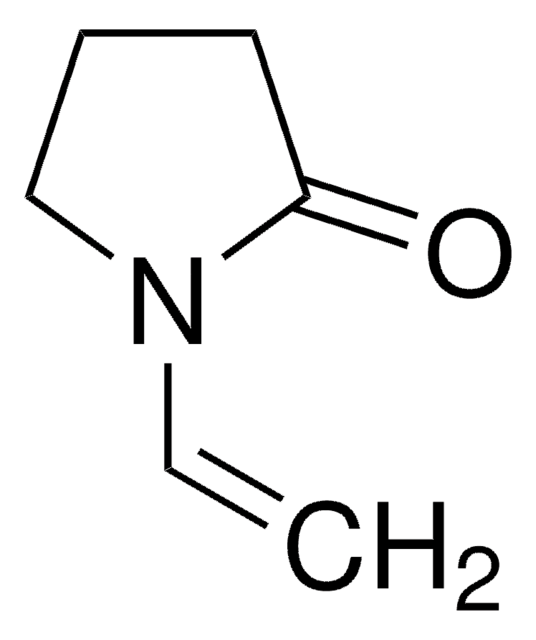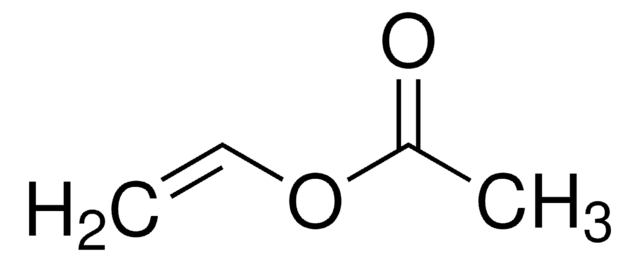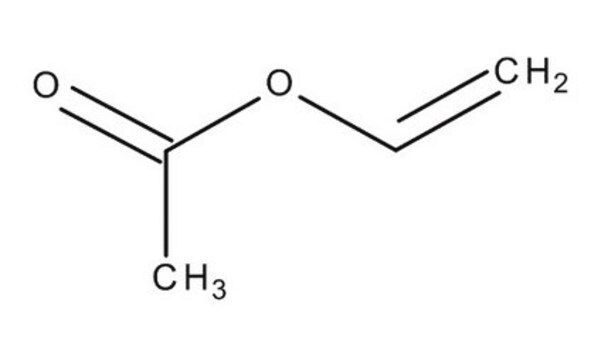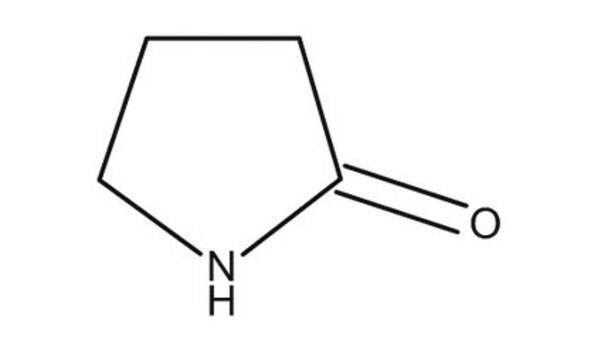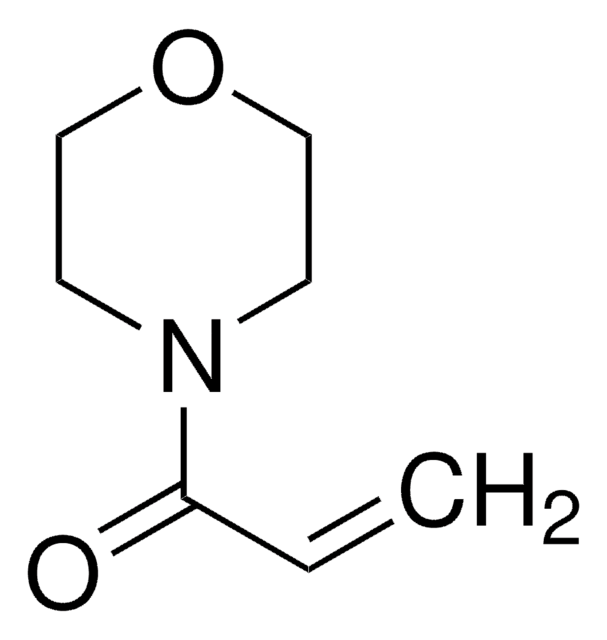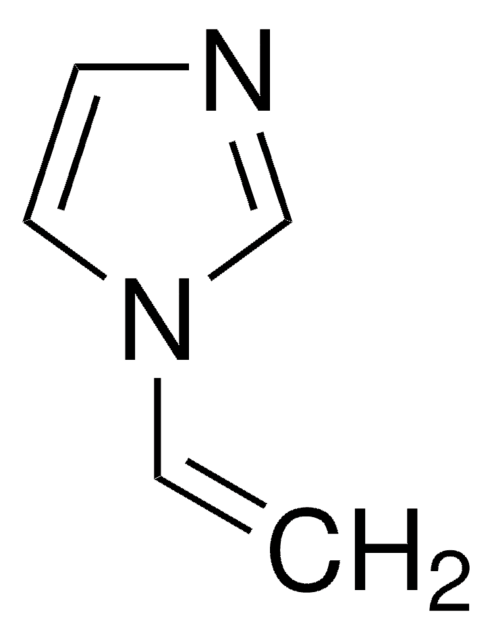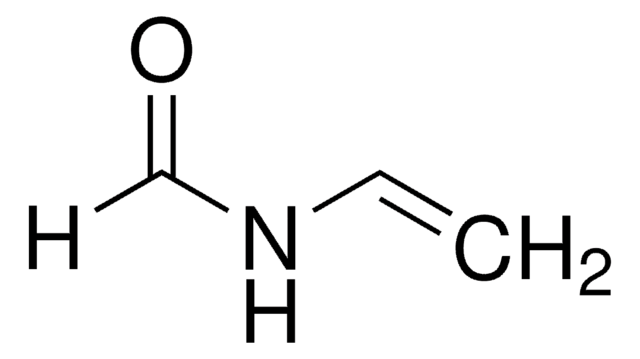Kluczowe dokumenty
V3409
1-Vinyl-2-pyrrolidinone
contains sodium hydroxide as inhibitor, ≥99%
Synonim(y):
1-Vinyl-2-pyrrolidone
About This Item
Polecane produkty
gęstość pary
3.8 (vs air)
Poziom jakości
ciśnienie pary
0.1 mmHg ( 24 °C)
Próba
≥99%
temp. samozapłonu
685 °F
zawiera
sodium hydroxide as inhibitor
100 ppm sodium hydroxide as inhibitor (added to bulk material)
granice wybuchowości
10 %
współczynnik refrakcji
n20/D 1.512 (lit.)
bp
92-95 °C/11 mmHg (lit.)
gęstość
1.04 g/mL at 25 °C (lit.)
temp. przechowywania
2-8°C
ciąg SMILES
C=CN1CCCC1=O
InChI
1S/C6H9NO/c1-2-7-5-3-4-6(7)8/h2H,1,3-5H2
Klucz InChI
WHNWPMSKXPGLAX-UHFFFAOYSA-N
Szukasz podobnych produktów? Odwiedź Przewodnik dotyczący porównywania produktów
Powiązane kategorie
Opis ogólny
Zastosowanie
Hasło ostrzegawcze
Danger
Zwroty wskazujące rodzaj zagrożenia
Zwroty wskazujące środki ostrożności
Klasyfikacja zagrożeń
Acute Tox. 4 Dermal - Acute Tox. 4 Inhalation - Acute Tox. 4 Oral - Carc. 2 - Eye Dam. 1 - STOT RE 2 - STOT SE 3
Organy docelowe
Respiratory system
Kod klasy składowania
10 - Combustible liquids
Klasa zagrożenia wodnego (WGK)
WGK 1
Temperatura zapłonu (°F)
203.0 °F - closed cup
Temperatura zapłonu (°C)
95 °C - closed cup
Środki ochrony indywidualnej
Eyeshields, Faceshields, Gloves, type ABEK (EN14387) respirator filter
Wybierz jedną z najnowszych wersji:
Masz już ten produkt?
Dokumenty związane z niedawno zakupionymi produktami zostały zamieszczone w Bibliotece dokumentów.
Klienci oglądali również te produkty
Produkty
The manufacture of monomers for use in ophthalmic applications is driven by the need for higher purity, improved reliability of manufacturing supply, but ultimately by the need for the increased comfort, convenience, and safety of contact lens wearers. Daily wear contact lenses have the potential to fill this need for many customers; however, their widespread use is constrained by higher costs compared to weekly- or monthly-based lenses. New approaches that improve cost structure and result in higher quality raw materials are needed to help make contact lenses more affordable and accelerate growth of the contact lens market.
Global Trade Item Number
| SKU | GTIN |
|---|---|
| V3409-1KG | 4061837480867 |
| V3409-5ML | |
| V3409-18KG | 4061837841569 |
| V3409-1L | |
| V3409-250G | 4061837841576 |
| V3409-250ML | |
| V3409-5G | 4061837841583 |
Nasz zespół naukowców ma doświadczenie we wszystkich obszarach badań, w tym w naukach przyrodniczych, materiałoznawstwie, syntezie chemicznej, chromatografii, analityce i wielu innych dziedzinach.
Skontaktuj się z zespołem ds. pomocy technicznej